 W
WEnergy development is the field of activities focused on obtaining sources of energy from natural resources. These activities include production of conventional, alternative and renewable sources of energy, and for the recovery and reuse of energy that would otherwise be wasted. Energy conservation and efficiency measures reduce the demand for energy development, and can have benefits to society with improvements to environmental issues.
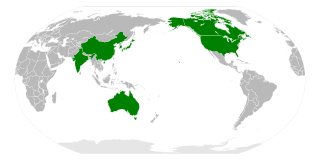 W
WThe Asia-Pacific Partnership on Clean Development and Climate, also known as APP, was an international, voluntary, public-private partnership among Australia, Canada, India, Japan, the People's Republic of China, South Korea, and the United States announced July 28, 2005 at an Association of South East Asian Nations (ASEAN) Regional Forum meeting and launched on January 12, 2006 at the Partnership's inaugural Ministerial meeting in Sydney. As of 5 April 2011, the Partnership formally concluded although a number of individual projects continue. The conclusion of the APP and cancellation of many of its projects attracted almost no media comment.
 W
WCoal pollution mitigation, sometimes called clean coal, is a series of systems and technologies that seek to mitigate the health and environmental impact of coal; in particular air pollution from coal-fired power stations, and from coal burnt by heavy industry.
 W
WClean Energy Trends is a series of reports by Clean Edge which examine markets for solar, wind, geothermal, fuel cells, biofuels, and other clean energy technologies. Since the publication of the first Clean Energy Trends report in 2002, Clean Edge has provided an annual snapshot of both the global and U.S. clean energy sector markets.
 W
WIn the 21st century, the earth's climate and its energy policy interact and their relationship is studied and governed by a variety of national and international institutions.
 W
WA Dyson sphere is a hypothetical megastructure that completely encompasses a star and captures a large percentage of its power output. The concept is a thought experiment that attempts to explain how a spacefaring civilization would meet its energy requirements once those requirements exceed what can be generated from the home planet's resources alone. Only a tiny fraction of a star's energy emissions reach the surface of any orbiting planet. Building structures encircling a star would enable a civilization to harvest far more energy.
 W
WDysprosium is a chemical element with the symbol Dy and atomic number 66. It is a rare-earth element with a metallic silver luster. Dysprosium is never found in nature as a free element, though it is found in various minerals, such as xenotime. Naturally occurring dysprosium is composed of seven isotopes, the most abundant of which is 164Dy.
 W
WElectrification is the process of powering by electricity and, in many contexts, the introduction of such power by changing over from an earlier power source. The broad meaning of the term, such as in the history of technology, economic history, and economic development, usually applies to a region or national economy. Broadly speaking, electrification was the build-out of the electricity generation and electric power distribution systems that occurred in Britain, the United States, and other now-developed countries from the mid-1880s until around 1950 and is still in progress in rural areas in some developing countries. This included the transition in manufacturing from line shaft and belt drive using steam engines and water power to electric motors.
 W
WEmbodied energy is the sum of all the energy required to produce any goods or services, considered as if that energy was incorporated or 'embodied' in the product itself. The concept can be useful in determining the effectiveness of energy-producing or energy saving devices, or the "real" replacement cost of a building, and, because energy-inputs usually entail greenhouse gas emissions, in deciding whether a product contributes to or mitigates global warming. One fundamental purpose for measuring this quantity is to compare the amount of energy produced or saved by the product in question to the amount of energy consumed in producing it.
 W
WEnergy and American Society: Thirteen Myths is a 2007 book about energy security and climate change, edited by Benjamin K. Sovacool and Marilyn A. Brown. The book is suitable for both technical and non-technical audiences since it is written in plain English and is "easily digested by anyone with a rudimentary background or interest in energy economics".
 W
WThe energy industry is the totality of all of the industries involved in the production and sale of energy, including fuel extraction, manufacturing, refining and distribution. Modern society consumes large amounts of fuel, and the energy industry is a crucial part of the infrastructure and maintenance of society in almost all countries.
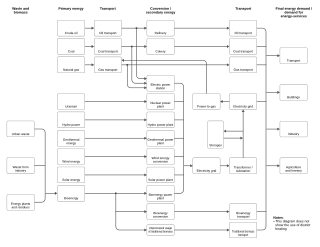 W
WAn energy system is a system primarily designed to supply energy-services to end-users. Taking a structural viewpoint, the IPCC Fifth Assessment Report defines an energy system as "all components related to the production, conversion, delivery, and use of energy". The field of energy economics includes energy markets and treats an energy system as the technical and economic systems that satisfy consumer demand for energy in the forms of heat, fuels, and electricity.
 W
WA fuel is any material that can be made to react with other substances so that it releases energy as heat energy or to be used for work. The concept was originally applied solely to those materials capable of releasing chemical energy but has since also been applied to other sources of heat energy such as nuclear energy.
 W
WThe Nancy and Stephen Grand Technion Energy Program (GTEP) or Grand Technion Energy Program was established in 2007 at Technion - Israel Institute of Technology, which is Israel's first university, founded in 1912.
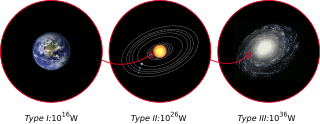 W
WThe Kardashev scale is a method of measuring a civilization's level of technological advancement based on the amount of energy they are able to use. The measure was proposed by Soviet astronomer Nikolai Kardashev in 1964. The scale has three designated categories:A Type I civilization, also called a planetary civilization—can use and store all of the energy available on its planet. A Type II civilization, also called a stellar civilization—can use and control energy at the scale of its planetary system. A Type III civilization, also called a galactic civilization—can control energy at the scale of its entire host galaxy.
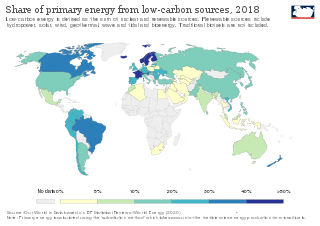 W
WLow-carbon power comes from processes or technologies that produce power with substantially lower amounts of carbon dioxide emissions than is emitted from conventional fossil fuel power generation. It includes low carbon power generation sources such as wind power, solar power, hydropower and nuclear power. The term largely excludes conventional fossil fuel plant sources, and is only used to describe a particular subset of operating fossil fuel power systems, specifically, those that are successfully coupled with a flue gas carbon capture and storage (CCS) system. Globally, 35% of electricity generation comes from low-carbon sources. As of 2018 the largest low-carbon energy sources globally were hydropower and nuclear power, with the latter providing over 50% of low-carbon power alone in United States and European Union.
 W
WSee Also: climate change mitigation, emissions trading.
 W
WMicrogeneration is the small-scale generation of heat and electric power by individuals, small businesses and communities to meet their own needs, as alternatives or supplements to traditional centralized grid-connected power. Although this may be motivated by practical considerations, such as unreliable grid power or long distance from the electrical grid, the term is mainly used currently for environmentally conscious approaches that aspire to zero or low-carbon footprints or cost reduction. It differs from micropower in that it is principally concerned with fixed power plants rather than for use with mobile devices.
 W
WMicrowave transmission is the transmission of information by microwave radio waves. Although an experimental 40-mile (64 km) microwave telecommunication link across the English Channel was demonstrated in 1931, the development of radar in World War II provided the technology for practical exploitation of microwave communication. In the 1950s, large transcontinental microwave relay networks, consisting of chains of repeater stations linked by line-of-sight beams of microwaves were built in Europe and America to relay long distance telephone traffic and television programs between cities. Communication satellites which transferred data between ground stations by microwaves took over much long distance traffic in the 1960s. In recent years, there has been an explosive increase in use of the microwave spectrum by new telecommunication technologies such as wireless networks, and direct-broadcast satellites which broadcast television and radio directly into consumers' homes.
 W
WThe Mont-Louis Solar Furnace is an experimental solar furnace - a solar thermal energy facility that was built in 1949. It was the first facility of its kind in the world, and was a precursor of the Odeillo Solar Furnace. It provides a thermal power of 50 kW.
 W
WMultifuel, sometimes spelled multi-fuel, is any type of engine, boiler, or heater or other fuel-burning device which is designed to burn multiple types of fuels in its operation. One common application of multifuel technology is in military settings, where the normally-used diesel or gas turbine fuel might not be available during combat operations for vehicles or heating units. Multifuel engines and boilers have a long history, but the growing need to establish fuel sources other than petroleum for transportation, heating, and other uses has led to increased development of multifuel technology for non-military use as well, leading to many flexible-fuel vehicle designs in recent decades.
 W
WNuclear Nebraska: The Remarkable Story of the Little County That Couldn’t Be Bought is a 2007 book by Susan Cragin which follows the controversy about a proposed low level nuclear waste dump, which was planned for Boyd County, Nebraska.
 W
WPeak demand on an electrical grid is simply the highest electrical power demand that has occurred over a specified time period. Peak demand is typically characterized as annual, daily or seasonal and has the unit of power. Peak demand, peak load or on-peak are terms used in energy demand management describing a period in which electrical power is expected to be provided for a sustained period at a significantly higher than average supply level. Peak demand fluctuations may occur on daily, monthly, seasonal and yearly cycles. For an electric utility company, the actual point of peak demand is a single half-hour or hourly period which represents the highest point of customer consumption of electricity. At this time there is a combination of office, domestic demand and at some times of the year, the fall of darkness.
 W
WA planetary civilization or global civilization is a civilization of Type I on Kardashev scale, with energy consumption levels near that of a contemporary terrestrial civilization with an energy capability equivalent to the solar insolation on Earth (between 1016 and 1017 watts). In social aspect – the worldwide, global, increasingly interconnected, international, highly technological society.
 W
WPower Hungry: The Myths of "Green" Energy and the Real Fuels of the Future is a book by Robert Bryce about energy, mainly from a United States perspective. It was published in 2010 by PublicAffairs. A short essay based on the book was released as an op-ed by the author in The Washington Post.
 W
WProven reserves is a measure of fossil fuel energy reserves, such as oil reserves, natural gas reserves, and coal reserves. It is defined as the "[q]uantity of energy sources estimated with reasonable certainty, from the analysis of geologic and engineering data, to be recoverable from well established or known reservoirs with the existing equipment and under the existing operating conditions." A reserve is considered proven if it is probable that at least 90% of the resource is recoverable by economically profitable means
 W
WThe PS10 Solar Power Plant, is the world's first commercial concentrating solar power tower operating near Seville, in Andalusia, Spain. The 11 megawatt (MW) solar power tower produces electricity with 624 large movable mirrors called heliostats. It took four years to build and so far cost €35 million (US$46 million). PS10 produces about 23,400 megawatt-hours (MW·h) per year, for which it receives €271 (US$360) per MW·h under its power purchase agreement, equating to a revenue of €6.3 million per year.
 W
WThe PS20 solar power plant (PS20) solar power plant is a solar thermal energy plant in Sanlucar la Mayor near Seville in Andalusia, Spain. It was the world's most powerful solar power tower until the Ivanpah Solar Power Facility in California became operational in 2014. The 20 megawatt (MW) solar power tower produces electricity with large movable mirrors called heliostats.
 W
WThe renewable-energy industry is the part of the energy industry focusing on new and appropriate renewable energy technologies. Investors worldwide have paid greater attention to this emerging industry in recent years. In many cases, this has translated into rapid renewable energy commercialization and considerable industry expansion. The wind power and solar photovoltaics (PV) industries provide good examples of this.
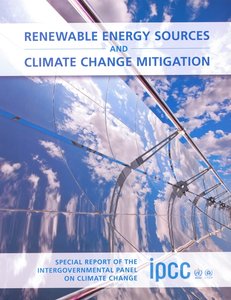 W
WThe United Nations Intergovernmental Panel on Climate Change (IPCC) published a special report on Renewable Energy Sources and Climate Change Mitigation (SRREN) on May 9, 2011. The report developed under the leadership of Ottmar Edenhofer evaluates the global potential for using renewable energy to mitigate climate change. This IPCC special report provides broader coverage of renewable energy than was included in the IPCC's 2007 climate change assessment report, as well as stronger renewable energy policy coverage.
 W
WRezence is an interface standard developed by the Alliance for Wireless Power (A4WP) for wireless electrical power transfer based on the principles of magnetic resonance. The Rezence system consists of a single power transmitter unit (PTU) and one or more power receiver units (PRUs). The interface standard supports power transfer up to 50 watts, at distances up to 5 centimeters. The power transmission frequency is 6.78 MHz, and up to eight devices can be powered from a single PTU depending on transmitter and receiver geometry and power levels. A Bluetooth Smart link is defined in the A4WP system intended for control of power levels, identification of valid loads and protection of non-compliant devices.
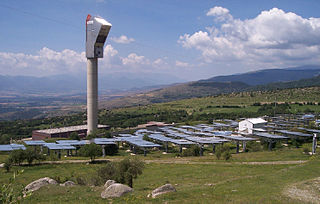 W
WThe THEMIS solar power tower is a research and development centre focused on solar energy. It is located near the village of Targassonne, in the department of Pyrénées-Orientales, south of France, 3 kilometres from the world's largest solar furnace in Odeillo.
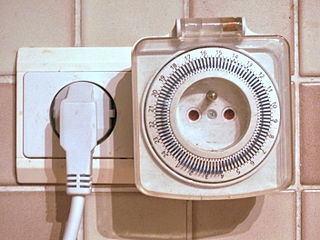 W
WA time switch is a timer that operates an electric switch controlled by the timing mechanism.
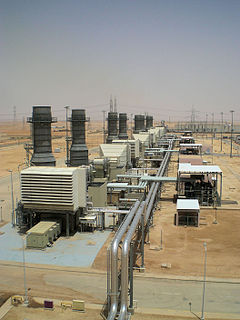 W
WTurbine inlet air cooling is a group of technologies and techniques consisting of cooling down the intake air of the gas turbine. The direct consequence of cooling the turbine inlet air is power output augmentation. It may also improve the energy efficiency of the system. This technology is widely used in hot climates with high ambient temperatures that usually coincides with on-peak demand period.
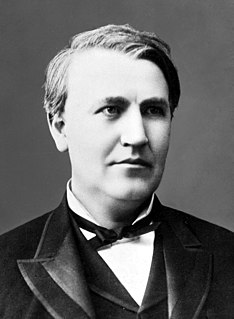 W
WThe war of the currents, sometimes called battle of the currents, was a series of events surrounding the introduction of competing electric power transmission systems in the late 1880s and early 1890s. It grew out of two lighting systems developed in the late 1870s and early 1880s; arc lamp street lighting running on high-voltage alternating current (AC), and large-scale low-voltage direct current (DC) indoor incandescent lighting being marketed by Thomas Edison's company. In 1886, the Edison system was faced with new competition: an alternating current system developed by George Westinghouse's company that used transformers to step down from a high voltage so AC could be used for indoor lighting. Using high voltage allowed an AC system to transmit power over longer distances from more efficient large central generating stations. As the use of AC spread rapidly, the Edison Electric Light Company claimed in early 1888 that high voltages used in an alternating current system were hazardous, and that the design was inferior to, and infringed on the patents behind, their direct current system.
 W
WWireless power transfer (WPT), wireless power transmission, wireless energy transmission (WET), or electromagnetic power transfer is the transmission of electrical energy without wires as a physical link. In a wireless power transmission system, a transmitter device, driven by electric power from a power source, generates a time-varying electromagnetic field, which transmits power across space to a receiver device, which extracts power from the field and supplies it to an electrical load. The technology of wireless power transmission can eliminate the use of the wires and batteries, thus increasing the mobility, convenience, and safety of an electronic device for all users. Wireless power transfer is useful to power electrical devices where interconnecting wires are inconvenient, hazardous, or are not possible.
 W
WYusifbayli Nurali Adil is deputy chairman of The State Agency on Alternative and Renewable Energy Sources.